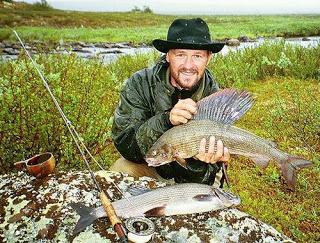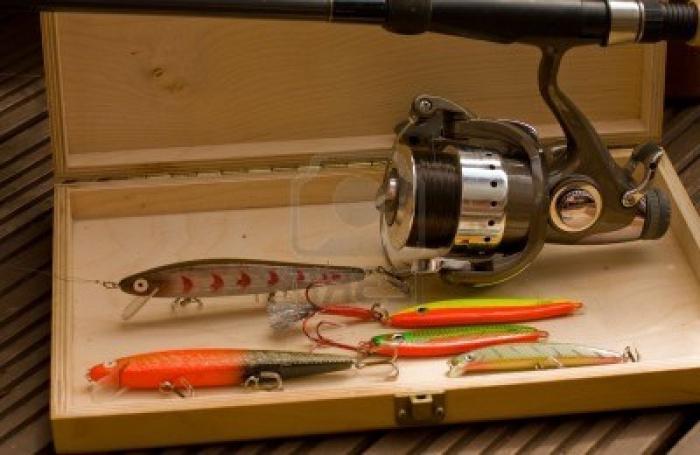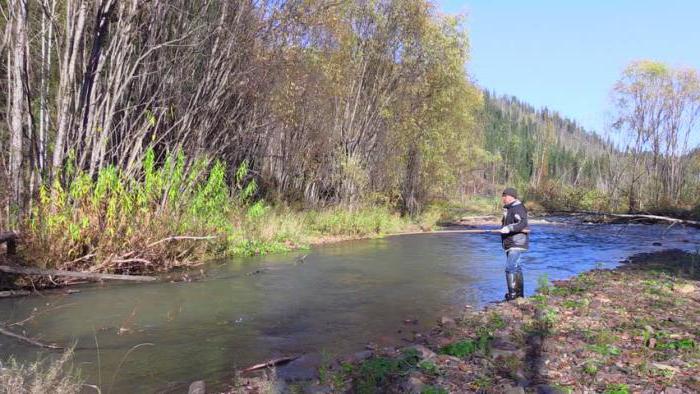Spoon-bait for grayling, help in choosing a tackle
In this article we will describe what spinning, reel and spoon-bait for grayling are necessary for their catching and voyaging, as well as about their places of parking and features of this species.
Grayling inhabits the fresh waters of the Northernhemisphere. Very similar to the sigamous and salmonids, but stand out as a separate family grayling. They live in clean cold-water lakes and rivers, choosing reservoirs with rocky and pebbly bottom. They have the ability to form lake-river, lake and purely river forms. Grayling is widespread in Russia - from the eastern to its western outskirts, but in certain places their population was sharply reduced due to an extreme change in the ecological situation and colossal capture.
Grayling can reach 2.5 kg of weight and 65-70 cm in length.

The period of spawning
They neprestjatsja on a fast current in stonyshallow water at a water temperature of 5-10 degrees. Caviar is swept out by females in certain portions from 3 to 10 thousand eggs. After 15-20 days from the fertilized caviar, the offspring begin to get out. Fishing for trolls, twisters, wobblers, donkeys during the spawning period is forbidden, it is allowed to catch the float using only one rod. violator of the rules are waiting for serious penalties, both for poaching.
Diet of grayling
They feed on worms, mollusks, gammarus crustaceans, larvae or adult forms of insects that develop in the water. Very rarely eat algae.

Locations of grayling
During the feeding period favorite placesThe habitats in the rivers are the rapids below the rapids and rapids. In this case, the appropriate gear for their catching will be tackles for catching in the wiring: wobblers, twisters, poppers, fly fishing or baits. Grayling is badly affected by overly rapid strides: usually in such places the water is muddy and it is difficult for them to find prey, therefore graylings choose places near the tail of the stream and along its sides, on the borders of the direct or reverse flow.
Describing a grayling
Against the current and the distant release of wiretackle will require maximum care and slowness, since this species has very weak lips and monstrous energy, which helps make steep jerks and tall candles. You should not hurry, but you do not need to delay too, because there is a possibility that the fish will be buried in reeds and similar aquatic plants.
Choosing a spoon-bait, rod, spool and spinning period
The ideal time is July 1-15, when he hunts small fish. A spinning length of 2.1-3 m is required with ceramic rings (Shimano, Daiwa, Major Craft or Salmo).

Spoon-bait for grayling should be monophonic andlight, at least medium-weight and slightly shiny (Salmo, Konger, Blue Fox or Mepps). For maximum casting, it is best to purchase an inertia-free coil (Shimano, Daiwa, or Fujitsu Quartz).








